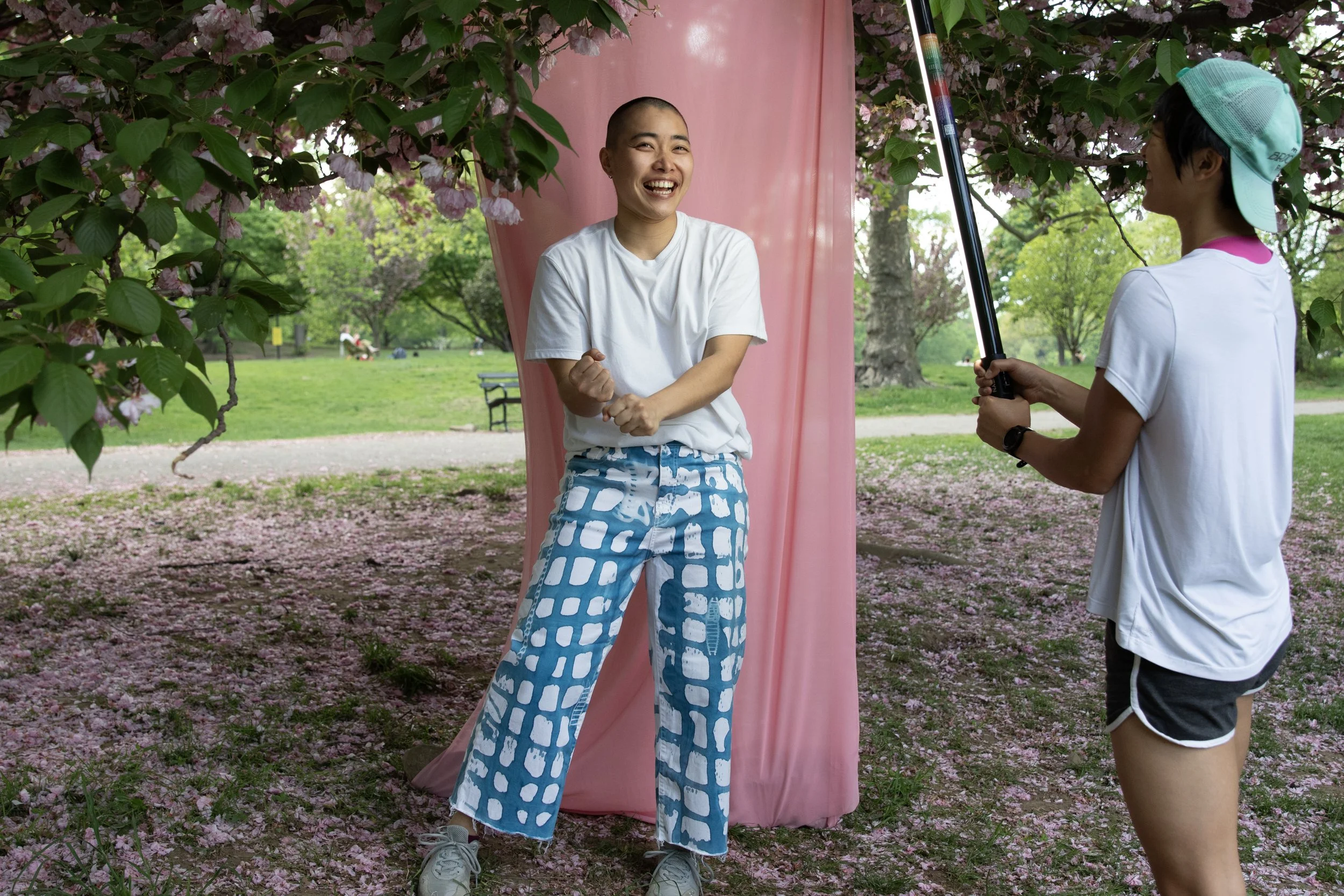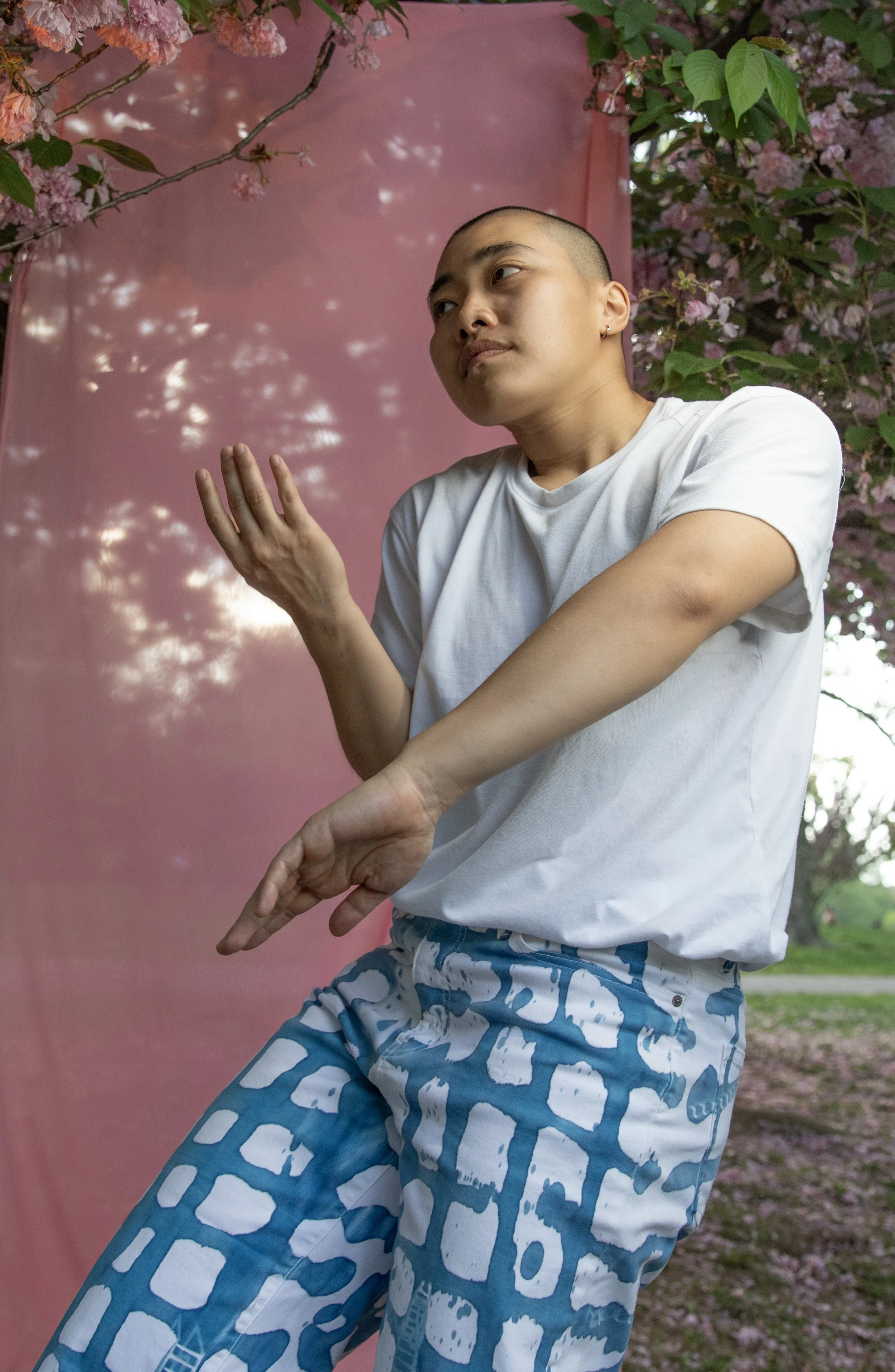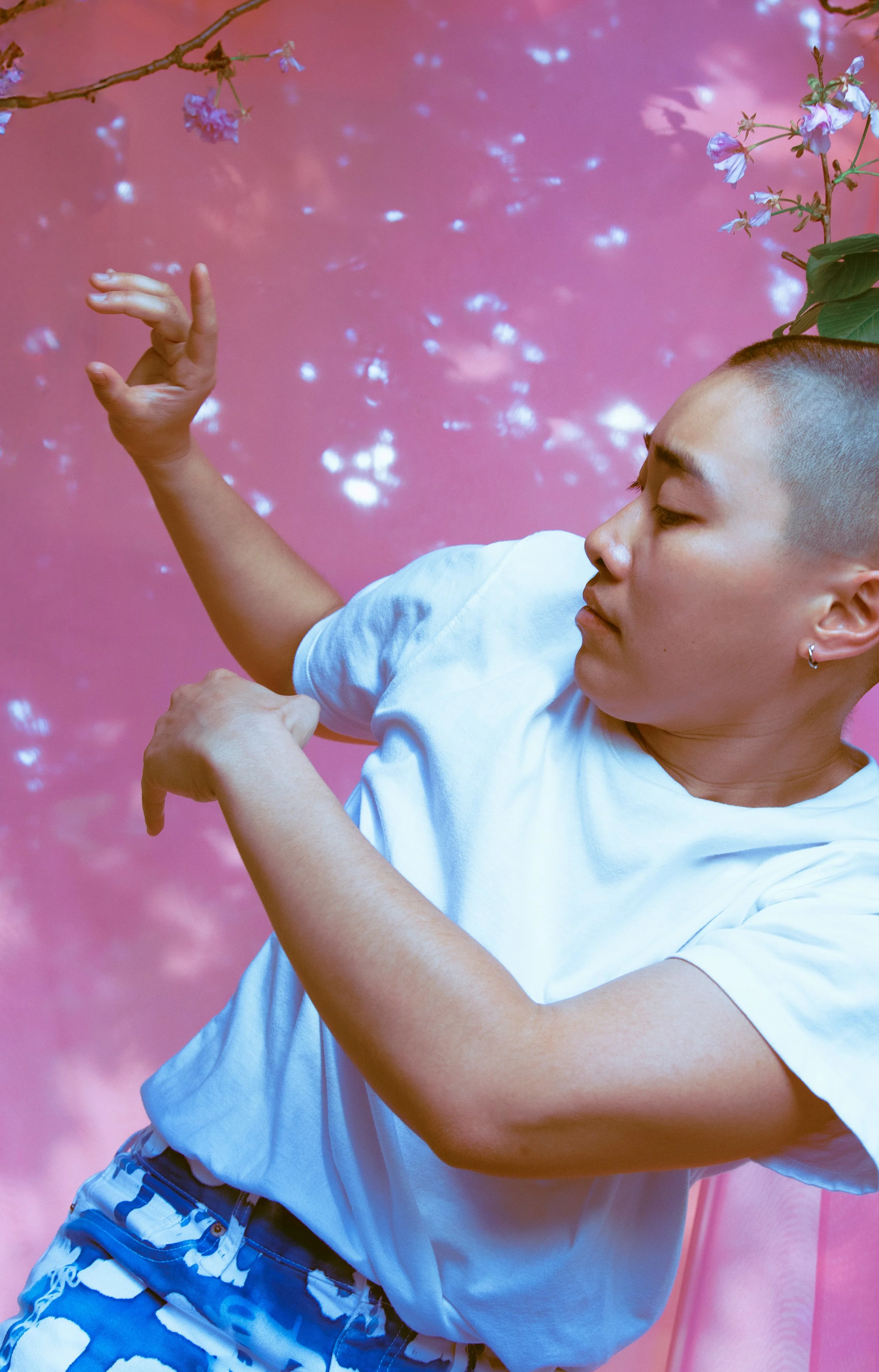POrtrait OUTDOOrs
Shooting outside is very appealing—but it takes more than just golden hour to make it work.
In this post, I’m breaking down the exact setup I used to shoot a natural light portrait with limited gear, limited space—and a lot of creative problem-solving.
We’ll cover:
✔️ Outdoor portrait lighting
✔️ Using fabric as a backdrop
✔️ Working with shadows + light leaks
✔️ Photoshop generative fill tips
✔️ Creative team-building advice
1.Find Your Inspiration
💡Save your inspirations on Instagram or Pinterest.
📁 I use both platforms and also organize folders on my phone by what I love:
– Lighting
– Composition
– Color
– Texture
2. Scout Location
For cherry blossoms 🌸, the end of April to the beginning of May is usually the best time.
Prospect Park has a few beautiful spots where the trees blossom.
⏰ Always scout at the exact time you plan to shoot. Why?
– ☀️ Direction of light
– 🌅 Sun color & angle This photo was taken at 5:29 PM.
3. Find the right fabric
Consider these 3 things when choosing fabric:
✨ Transparency
✨ Reflection
✨ Color
Each one affects how light interacts with your subject.
I found mine at Mood Fabrics
📍 225 W 37th St, 3rd Floor, NYC
4. Bring an addition light
The sun is acting as a background (or hair) light. That’s why you’ll need an additional light to bring contrast and definition to the subject’s features.
We used a tube light, but you can also use a reflector depending on your setup.
5. Problem Solving
Our fabric turned out to be too transparent.
When we doubled it, we were left with very little space to use as a backdrop.
💻 AI to the rescue.
In Photoshop, use Generative Extend.
Just type “pink fabric” to replicate and expand the background seamlessly—matching the texture and tone of what you already shot.
6. Editing Color
This process is very subjective. It’s where your personal artistry truly shines ✨✨✨✨
Things to Notice in Your Image:
1️⃣ Tone Contrast – Is there a noticeable difference between the foreground and background?
2️⃣ Focus Point – What’s the first thing your eye goes to? Is that intentional?
3️⃣ Light vs. Shadow – Shadows are usually the opposite color temperature of the light.
→ Warm light = cool shadows
→ Cool light = warm shadows
7. Ask for support
I can’t stress enough how important your team is.
I’ve spent years as a one-woman band—
It made me versatile and resourceful, but also… limited. The more detailed your vision, the more hands you need to bring it to life. Support gives you space to be creative.
If you’re ready to level up,
start building your team.
8. Give Thanks
Always credit your team.
Muse: Shannon @hsiangru.yu
Assistant: Emily @emilehw
9. Lastly
Got questions?
Feel free to email me 💬
Sometimes references can feel intimidating—but even on a budget, you can practice the techniques that go into creating high-quality images.
Every time you try something new, you add a tool to your creative toolkit.
✨ Keep experimenting. Keep growing!
- Anya










